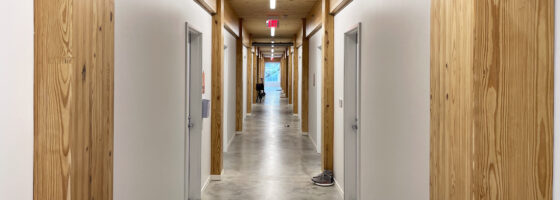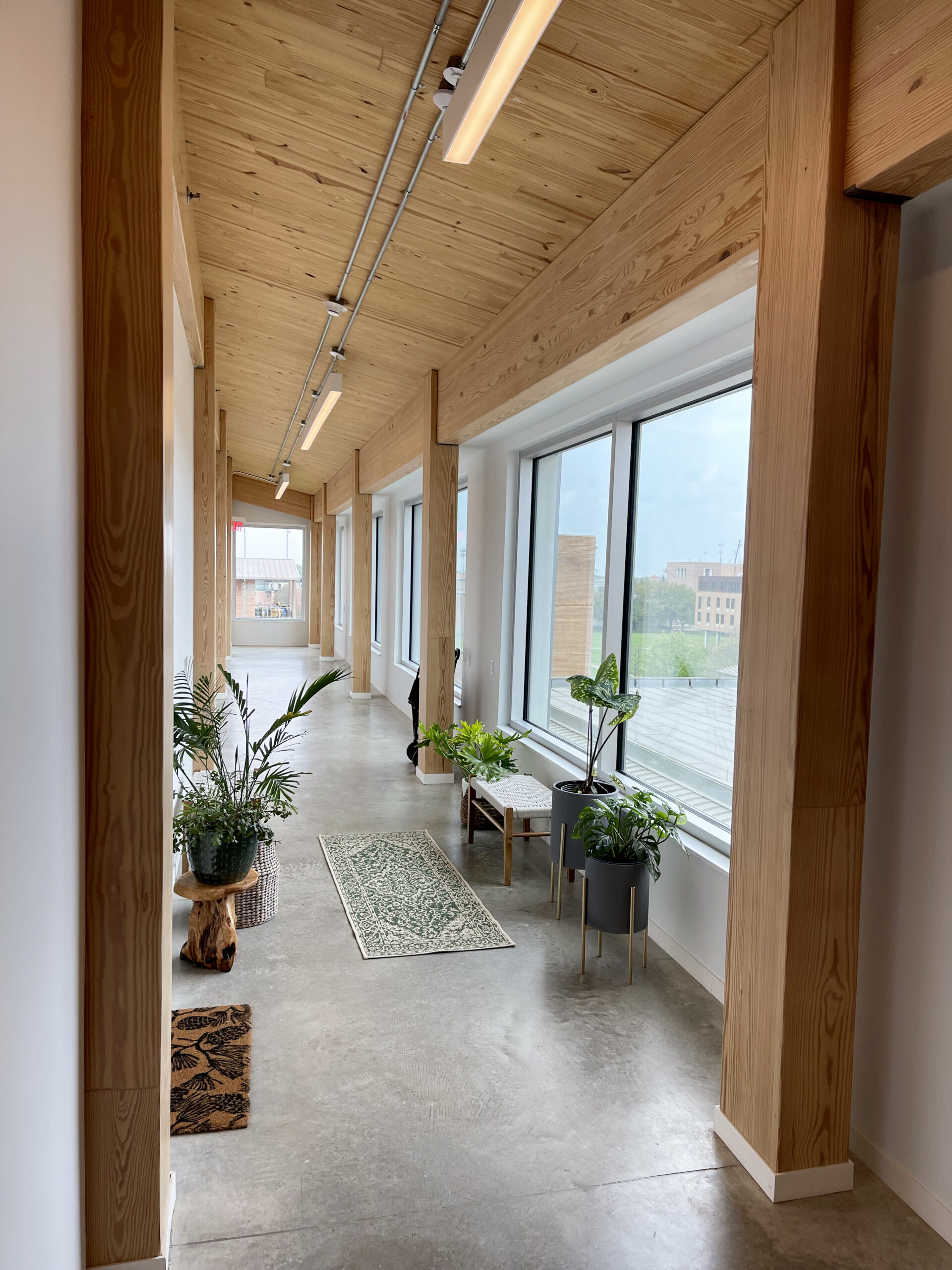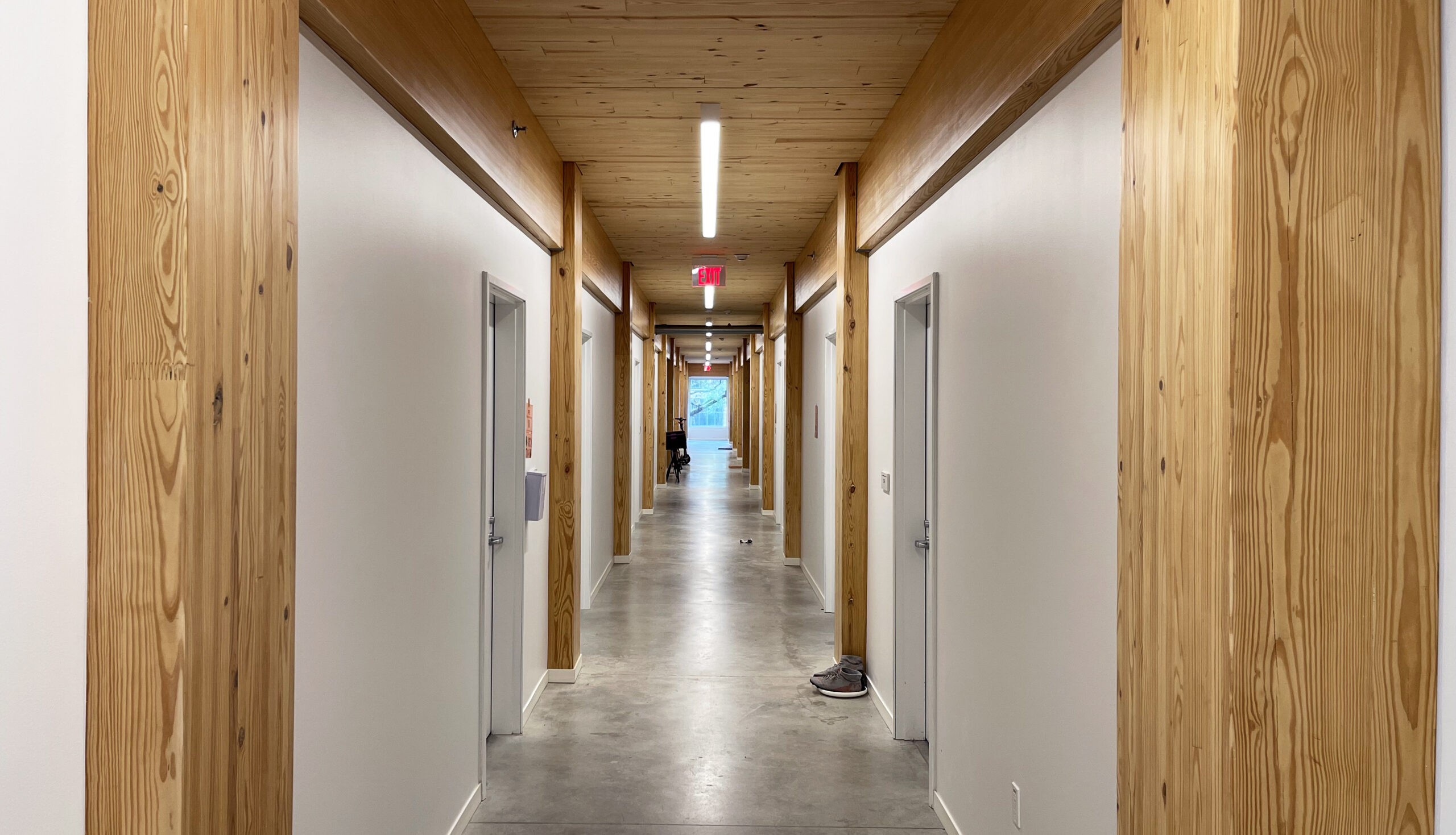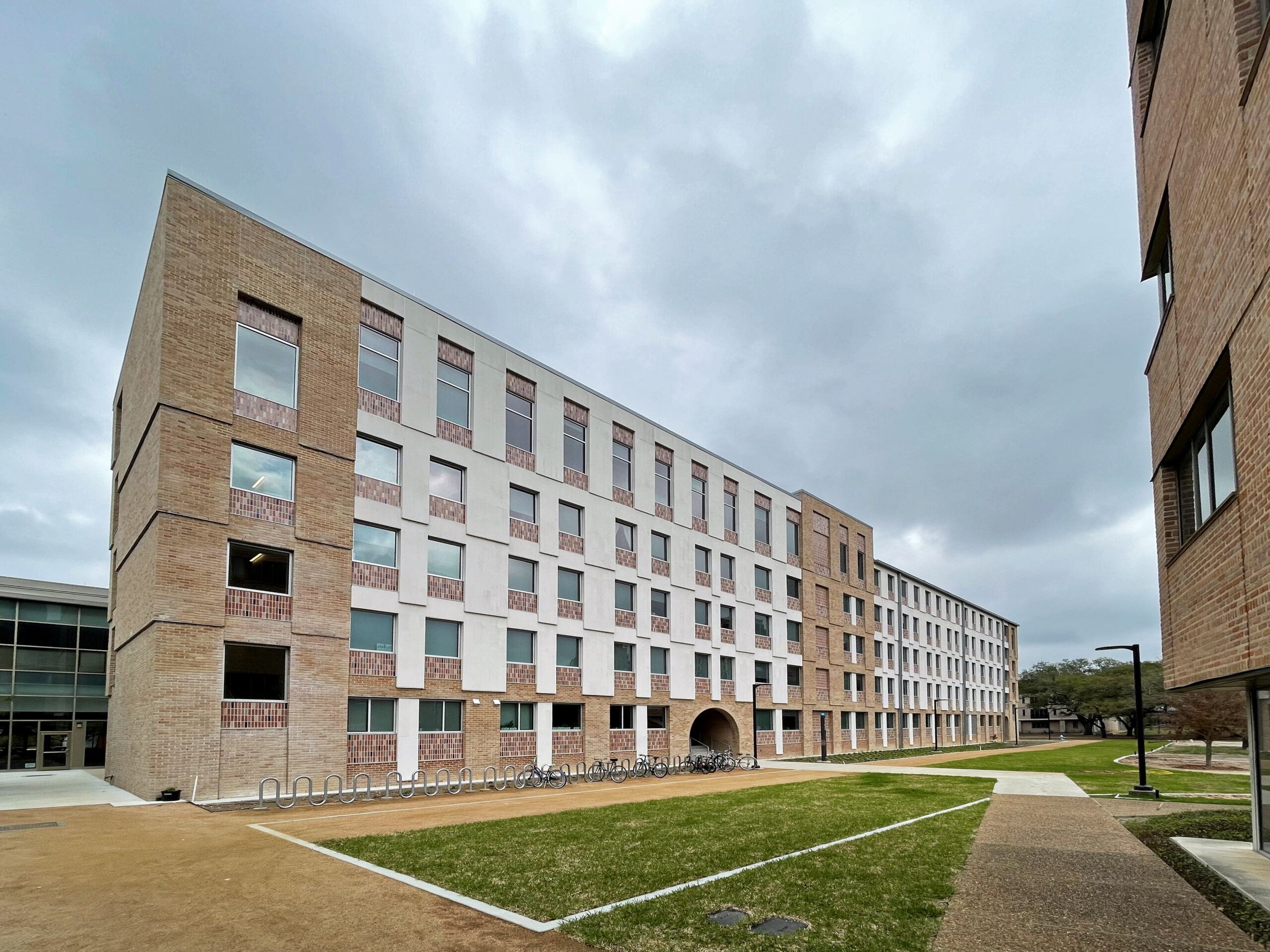Cross-Laminated Timber and Acoustic Design
Catherine Halstead, Marketing Communications Manager | March 15, 2023

Acoustic design is a field that is both methodical and creative, and we are often presented with challenges that require innovative solutions in order to achieve certain goals set forth at the onset of a project. Working in collaboration with Kirksey Architecture on one of our recently completed new construction projects, the Hanszen College Residential Building at Rice University, we rose to the occasion with the design directive of utilizing cross-laminated timber while overcoming the acoustical challenges often associated with this material. With Rice’s commitment to sustainability and the expertise of its forward-thinking professors of architecture, Jesús Vassallo and Albert Pope, this project provided an excellent opportunity to make use of one of the latest industry trends while helping our clients achieve their goals.
Cross-laminated timber (CLT) is a relatively new engineered wood product that has gained popularity as a sustainable and innovative alternative to traditional construction materials. CLT is made by layering dimension lumber panels perpendicular to each other and bonding them with adhesive. The resulting panels are strong, lightweight, and versatile, making them an attractive choice for a variety of projects.
One of the most significant benefits of using CLT is its sustainability factor. It is made from renewable resources and has a much lower carbon footprint than many other building materials. Unlike concrete and steel, which require vast amounts of energy to produce, CLT can be manufactured using sustainable and environmentally friendly methods. It can also reduce the amount of waste generated during construction since the material is prefabricated off-site and precisely cut to size. Due to its strength and durability, CLT is an excellent option for tall buildings, as it can support significant loads without requiring additional structural support. CLT does present some acoustical challenges as a highly sound reflective material, which can result in rooms that are overly reverberant if care is not taken in the design process. One solution is to use sound-absorptive materials on the interior surfaces of CLT walls or ceilings, reducing the amount of reverberant sound energy and resulting in a more controlled acoustic environment.
Our acoustic focus for the Hanszen College Residential Building at Rice University was controlling airborne and structure-borne sound and vibration flanking. With this project, the desired aesthetic was to prominently display the wood as the finished surface, requiring our design expertise to avoid significant degradation in acoustic separation between sound sensitive areas. Led by Carlos Rivera, Associate Principal, Jaffe Holden worked closely with the design team to develop structural connection details that incorporated resilient elements along with interior demising assemblies to maximize impact and sound isolation between units. Through careful design and collaboration, the challenges presented by the use of CLT on any project can be overcome to create optimal acoustic environments.
“One of the earliest challenges we had to work through with the CLT design was the limited availability of acoustical laboratory test data. There were specific minimum performance ratings the acoustical design needed to achieve and very little information to objectively evaluate the various CLT systems being considered. After an intensive period of research and analysis, we were able to develop the internal resources necessary to calculate the acoustical performance of the CLT and associated components. We conducted extensive research and analyzed the data to develop an approach we believed would solve the problem utilizing a 2″ thick acoustic underlayment. This allowed the team to finalize the design, knowing the selected system provided the best value for the client.”
– Carlos Rivera, Associate Principal
Cross-laminated timber offers many benefits as a sustainable and versatile construction material. While it is not without challenges, its strength, durability, and design flexibility make it an excellent option for a wide range of projects. As technology and manufacturing processes continue to advance, it is likely that the use of CLT will become even more prevalent in the design and construction industry.




Comments